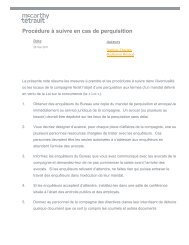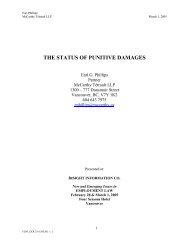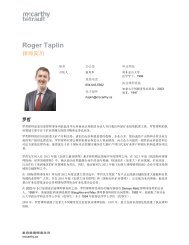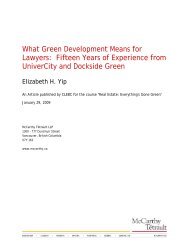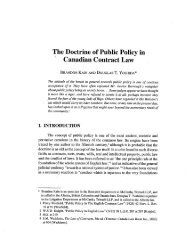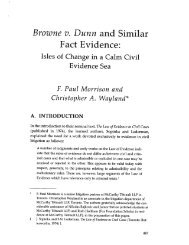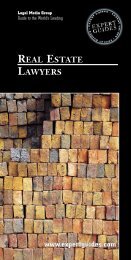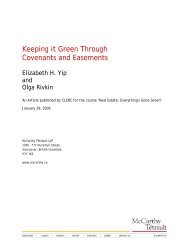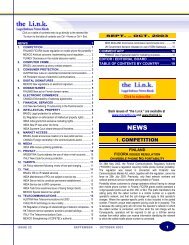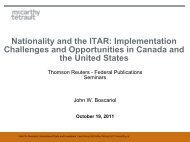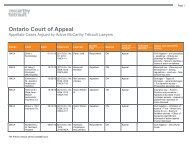Presentation Material - McCarthy Tétrault
Presentation Material - McCarthy Tétrault
Presentation Material - McCarthy Tétrault
You also want an ePaper? Increase the reach of your titles
YUMPU automatically turns print PDFs into web optimized ePapers that Google loves.
Chris Falk<br />
Stefanie Morand<br />
<strong>McCarthy</strong> Tétrault LLP<br />
2012 STEP Conference<br />
At the 2012 STEP Conference, the CRA was asked whether it would administratively ignore<br />
subsections 40(3.6) and (3.61) when determining the net capital loss for purposes of subsection<br />
164(6).<br />
The specific question posed to the CRA and the CRA’s response were as follows:<br />
QUESTION 5<br />
There can be an issue when an estate elects under subsection 164(6) to apply a capital loss to<br />
the terminal return of the deceased. It is possible to create “circularity” under 164(6), when an<br />
estate carries back a loss but then realizes a capital gain on other assets in its first taxation<br />
year. See Nick Moraitis and Manu Kakkar's Taxfind article "Potential Circularity Problem with<br />
Estate Loss Carryback" published by the CTF. How would CRA interpret 164(6) in such<br />
circumstances Would you administratively ignore subsections 40(3.6) and 40(3.61) when<br />
determining the net capital loss for purposes of 164(6)<br />
CRA Response<br />
[…]<br />
We have reviewed the article referred to in your question and agree, based on a technical<br />
reading of the above provisions, that it is possible for a circularity issue to arise. If the estate<br />
realizes capital gains during its first taxation year, those gains must be applied against the loss<br />
on the share disposition, in accordance with the requirements of subsection 164(6), in order to<br />
determine the amount that can be carried back. Where this occurs, the application of subsection<br />
40(3.61) will result in an amount of loss stopped pursuant to subsection 40(3.6), which in turn<br />
will reduce the amount available for the subsection 164(6) election, and the circular nature of<br />
these provisions becomes an issue.<br />
To date, however, the Income Tax Rulings Directorate has not been informed of an actual case<br />
in which this issue has arisen. We suspect that the incidence of this potential circularity issue is<br />
likely quite limited, for a number of reasons:<br />
1. One would expect that typically, estates should not realize significant gains in their<br />
first taxation years, as assets acquired at the time of death would generally be acquired<br />
at fair market value pursuant to subsection 70(5).<br />
2. The ability to distribute assets of the estate to its beneficiaries on a rollover basis<br />
pursuant to subsection 107(2), where applicable, would avoid the generation of gains in<br />
the estate in respect of such asset dispositions.<br />
3. Given that the issue was identified in the above-referenced article, many practitioners<br />
are no doubt aware of it and are ensuring that capital gains are deferred beyond the first<br />
taxation year of the estate.<br />
We would appreciate if any of your members encounter such an example, that it be provided to<br />
CRA, so that we can review the issue further on a case-by-case basis.<br />
560600/422632<br />
MT DOCS 11864055v1G<br />
22



